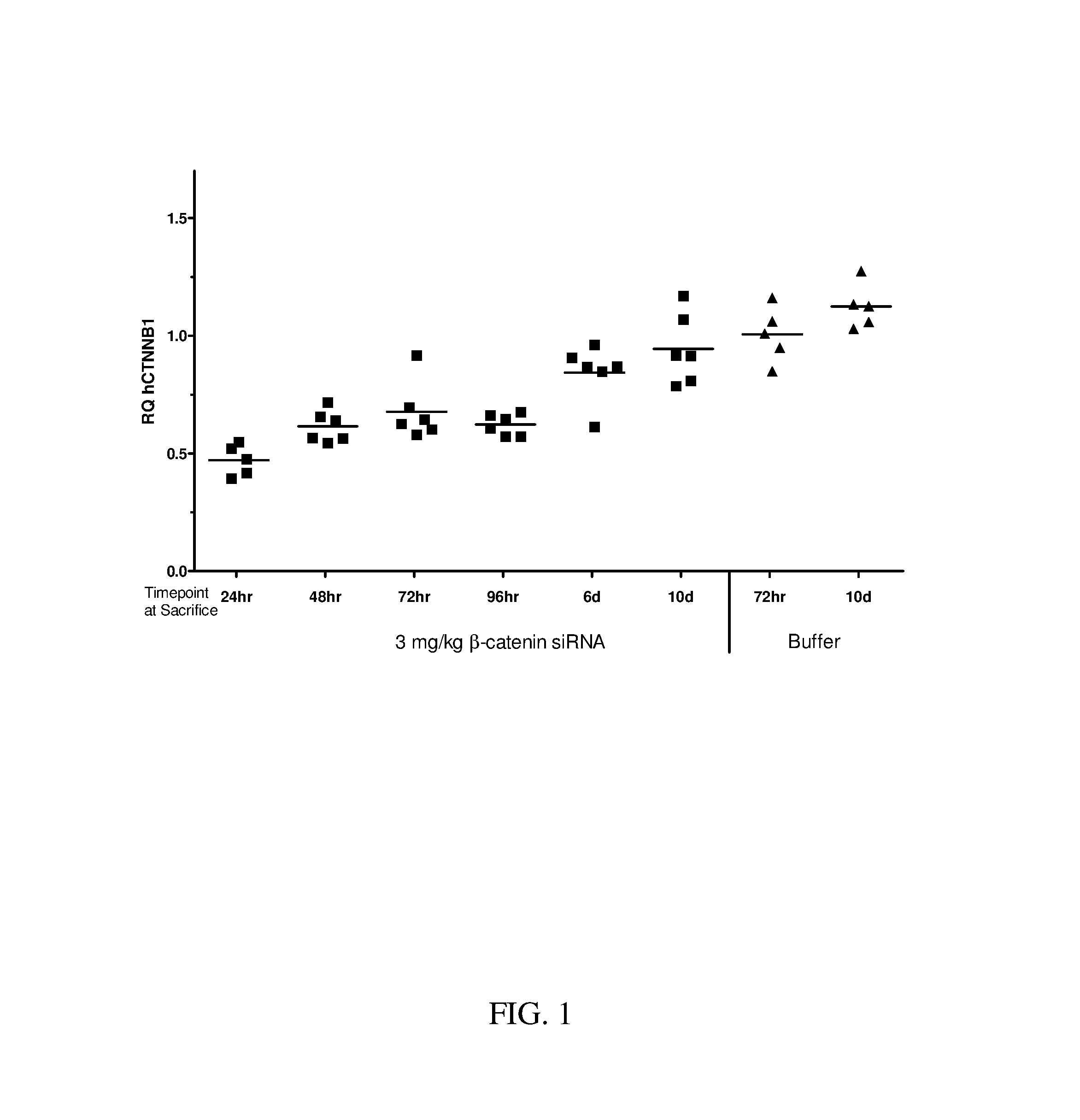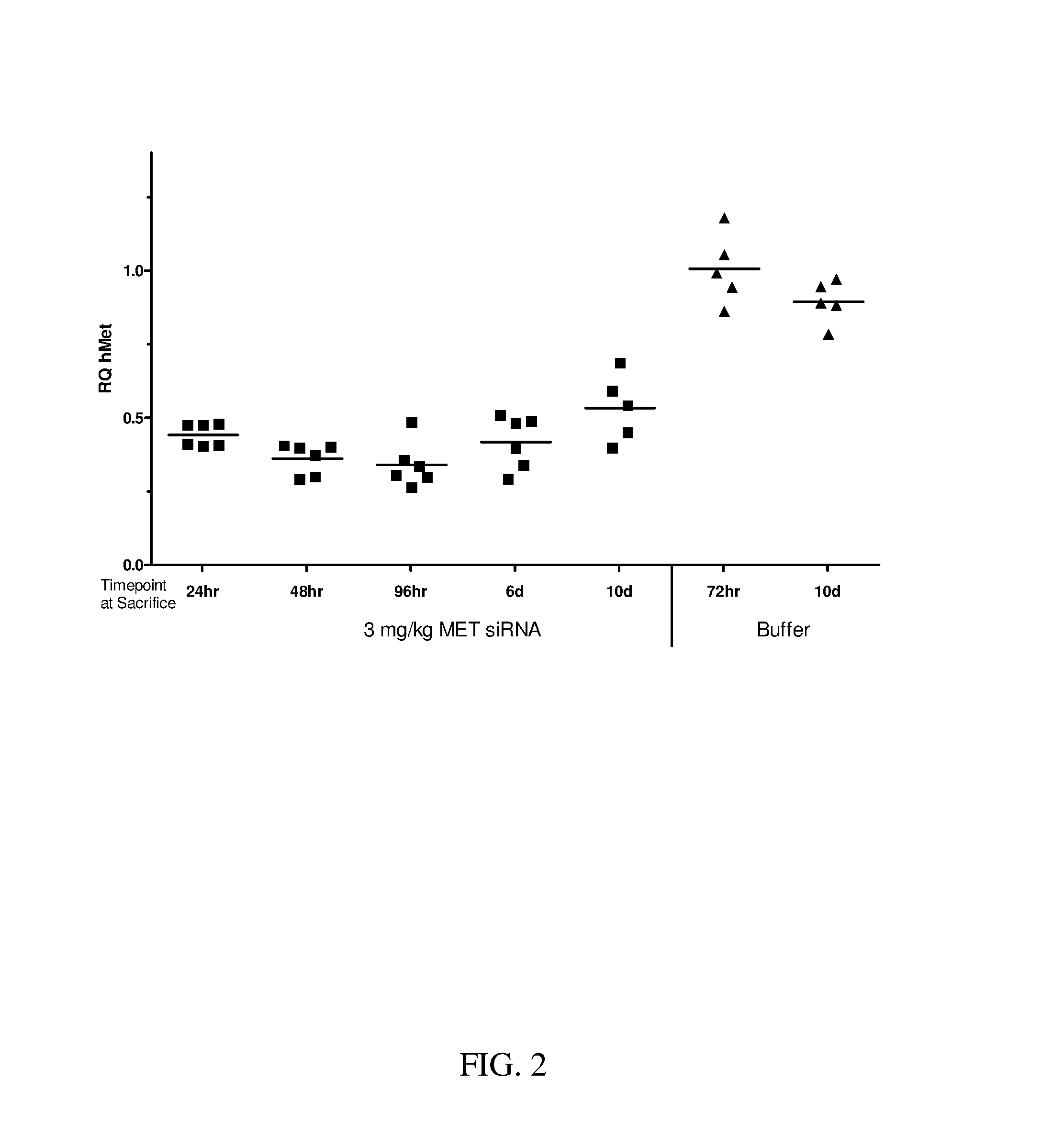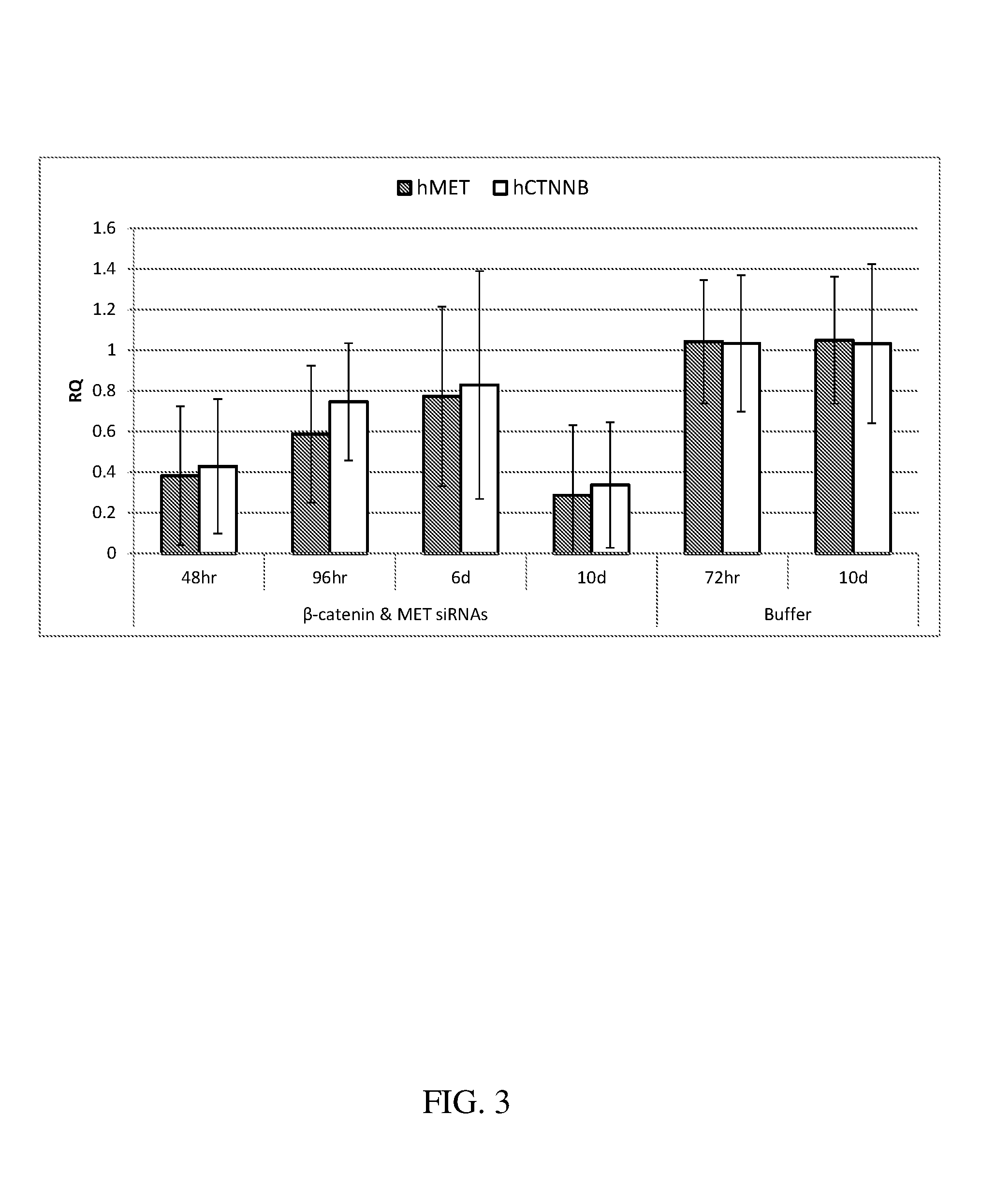Block copolymers
a technology of copolymers and oligonucleotides, applied in the field of block copolymers, can solve the problems of ineffective or toxic in vivo, poor therapeutic effect, and destabilization of the oligonucleotide-transfection reagent interaction, and achieve the effect of effective delivery of an oligonucleotide to a cell
- Summary
- Abstract
- Description
- Claims
- Application Information
AI Technical Summary
Benefits of technology
Problems solved by technology
Method used
Image
Examples
example 1
Synthesis of PEG-0.6k-CTA (Compound 6)
[0371]
[0372]HOOC—PEG0.6K-ECT (Compound 6). To a 100 mL one-neck round-bottom flask was added ECT (473 mg, 2.0 mmol, Omm Scientific) followed by anhydrous tetrahydrofuran (20 mL) and triethylamine (0.307 mL, 2.2 mmol). This mixture was stirred at 0° C. for 5 min before trifluoroacetic acid pentafluorophenyl ester (0.368 mL, 2.14 mmol) was added drop wise to the stirred reaction. The mixture was stirred at 0° C. for 5 min then warmed to room temperature.
[0373]After allowing to react for 20 min at room temperature, the reaction was diluted into EtOAc (100 mL) and extracted with saturated aqueous solution of NaHCO3 (3×40 mL). The EtOAc layer was separated, dried over Na2SO4, filtered and then evaporated providing the crude PFP-ester 4 as yellow oil.
[0374]The crude ester 4 was dissolved in anhydrous CH2Cl2 (20 mL) and then cooled to 0° C. To the cooled stirred solution was added triethylamine (0.251 mL, 1.8 mmol) and Amino-dPEG12-acid (1.12 g, 1.8 mm...
example 2
Synthesis of Nag(OAc4)C5N-PEG-0.6K-CTA (Compound 8)
Step 1. Synthesis of Compound 3
[0375]
[0376]N-t-Boc-5-amino-1-pentanol. To a 1.0 L one-neck round-bottom flask containing a solution of 5-amino-1-pentanol (15.0 g, 145.4 mmol) in water (140 mL) and saturated aqueous NaHCO3 (1.4 mL), a solution of di-tert-butyl dicarbonate (33.3 g, 152.7 mmol) in THF (280 mL) was added. The mixture was then stirred at room temperature overnight with the flask open to the atmosphere. The reaction mixture was diluted with saturated aqueous NaHCO3 (90 mL) and extracted with EtOAc (400 mL). The organic layer was separated, dried over Na2SO4, filtered, and the solvent was evaporated providing 28.9 g (98%) of the final product as clear colorless oil. 1H NMR analysis showed the product was clean of impurities, and no further purification was attempted. Alternatively, N-t-Boc-5-amino-1-pentanol can be obtained from TCI America of Portland, Oreg.
[0377]Compound 2. Compound 2 was prepared by a procedure adopted ...
example 3
Synthesis of Polymer NagC5N-PEG0.6-[PEGMA4-580-PDSMA10-BPAM10]6.4-b[D25-B50—P25]6.3 (P1)
PUM
| Property | Measurement | Unit |
|---|---|---|
| mole percent | aaaaa | aaaaa |
| length | aaaaa | aaaaa |
Abstract
Description
Claims
Application Information
 Login to View More
Login to View More - R&D
- Intellectual Property
- Life Sciences
- Materials
- Tech Scout
- Unparalleled Data Quality
- Higher Quality Content
- 60% Fewer Hallucinations
Browse by: Latest US Patents, China's latest patents, Technical Efficacy Thesaurus, Application Domain, Technology Topic, Popular Technical Reports.
© 2025 PatSnap. All rights reserved.Legal|Privacy policy|Modern Slavery Act Transparency Statement|Sitemap|About US| Contact US: help@patsnap.com



